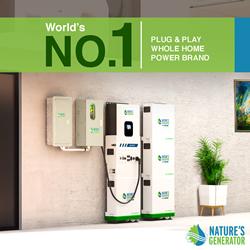How Flushing your Toilet could help create Biofuel
Offshore wind energy system combines sea water and wind to create electricity
The World's Largest Solar Plant Is Now Online in India
Could depleted oil wells be the next step in energy storage?
The First Tidal Generator in North America Is Now Online
Tesla powers a whole island with solar to show off its energy chops
Power to the people: Solar panel sales to soon surpass leasing
Want to boost wind and solar power? Bring them together
BREAKING: Tesla, SolarCity merger approved with 85% shareholder support
Solar Power Turns Water and Carbon Dioxide Into Fuel
Solar Power Meets Electric Vehicle Atop a VW Microbus
Solar power proponents hopeful Trump sees benefit of growing industry
Self-drive delivery van can be 'built in four hours'
Is The Best Analogy For The Energy Storage Business--Eeek!--Hard Drives?
Batteries That Make Use of Solar Power, Even in the Dark
Records 1111 to 1125 of 2275
First | Previous | Next | Last
Featured Product

